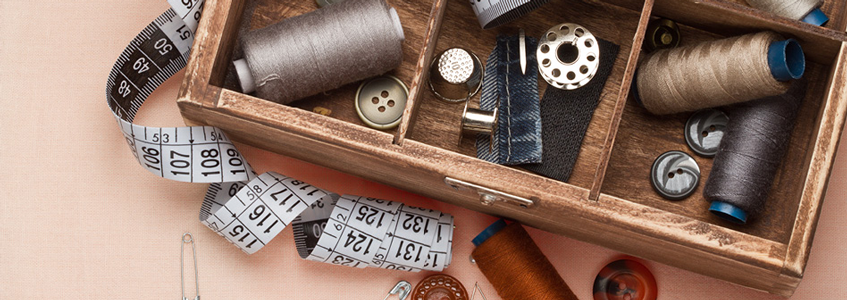Your Cart is Empty
Free Shipping On All Orders In January - No Coupon Code Necessary
Free Shipping On All Orders In January - No Coupon Code Necessary
Free Shipping On All Orders In January - No Coupon Code Necessary
Free Shipping On All Orders In January - No Coupon Code Necessary

January 09, 2017 3 min read
A dress form is one of the best investments you can make if you plan on making clotting patterns. A dress form (also known as a body form) is a three dimensional model of the torso used for fitting clothing that is being sewed or designed. When designing clothing patterns, they can be put on the body form so one can see the drape and fit of the garment as it would appear on a body and make necessary alterations or adjustments.
Typically, dress forms come in all shapes and sizes for almost every article of clothing that can be made. Adjustable dress forms allow garments to be tailored to fit a specific individual, while dress forms in standard clothing sizes are used to make different patterns.
 Dress forms can be used for a number of reasons. It is almost impossible to properly fit clothing on yourself without a knowledgeable helper, so a body form or dress form is of much help. The following instances will elaborate more about the need and importance of a dress form in fashion design & tailoring:
Dress forms can be used for a number of reasons. It is almost impossible to properly fit clothing on yourself without a knowledgeable helper, so a body form or dress form is of much help. The following instances will elaborate more about the need and importance of a dress form in fashion design & tailoring:
 Now that's the million dollar question. Or more like the couple hundred dollars question. Many people, especially those who has a desire for fashion designing keep wondering whether or not to buy a dress form, especially when they're starting out?
Now that's the million dollar question. Or more like the couple hundred dollars question. Many people, especially those who has a desire for fashion designing keep wondering whether or not to buy a dress form, especially when they're starting out?
It's slightly far fetched to say that a dress form is a significant investment or that it's one of the things you can skip on. If you're an up & coming fashion designer or tailor, a dress form is one of the must have tools.
A dress form is also worth buying:
If you are a collector: or you simply want a jewelry showpiece or fun clothes in your house.
If you are a shop owner or blogger who needs a prop for taking photographs and styling.
If you want a form to mimic your body so you can use it as a fitting tool.
If you use to draft your own patterns, but still prefer draping as a part of the drafting process, rather than only working with pattern making. This thing helps you to visualize the designing ideas that you are working with.
If you often make very fitted patterns with a lot of design details, and want a dress form to play with the drape of fabric or to assess style lines.
A dress form is definitely worth getting, especially in the above mentioned scenarios. So, if you are serious on buying a body form, look for a form that:
We hope that this article helped you learn a bit more about dress forms. Don't forget to check out our selection of professional dress forms as well!